The Black Pyramid Of Amenemhat III – Mysterious Underground Chambers And Lost Ancient Treasures
Ellen Lloyd - AncientPages.com - The Black Pyramid, constructed under the reign of Amenemhat III, was initially erected as a monumental edifice that bore witness to the Pharaoh's magnificent grandeur.
Unfortunately, the pyramid, originally named Amenemhet is Mighty, has been looted and lost all its treasures. The pyramid got its name for its dark, decaying appearance as a rubble mound, and when archaeologists started to excavate at the site, the Black Pyramid was already in ruins.
Only some people today are aware of its existence. Even if the Black Pyramid is not as famous as the Giza pyramids, it is a fascinating ancient structure providing some historical knowledge about ancient Egypt.
Ancient Secrets Of The Black Pyramid Of Amenemhat III
Amenemhat III, Pharaoh of the Twelfth Dynasty of Egypt, planned to be buried inside the Black Pyramid with his queen.
The "Black Pyramid" of King Amenemhat III. Credit: Tekisch - CC BY-SA 3.0
Still, there were construction problems, and he abandoned the building project. Instead, he built a new pyramid at Hawara, near the Faiyum. The Black Pyramid at Dahshur became the final resting place for some royal women. It is still unknown who is buried inside the Black Pyramid.
The "Black Pyramid" of King Amenemhat III. Credit: Tekisch - CC BY-SA 3.0
When excavation of the Dashur Pyramid started in 1892, archaeologists made many exciting discoveries. Many of the pyramid's stones had been stolen and used to build houses in the village and surrounding areas. However, some of the remaining stones found in the vicinity and inside the pyramid "were inscribed with boat scenes and the like, in a style which showed clearly that they had originally belonged to Old Kingdom Mastabas; and it was clear that Amenemhat in constructing his pyramid "had quarried extensively among earlier tombs, possible in Medum or Dashur." 1
The Black Pyramid was initially about 75 meters tall, with a base 105 meters long.
In front of the entrance to the pyramid, there was a colossal "false door! In red granite 3,86 meters high, inscribed with the names and titles of Amenemhat. This must have been the offering steal which Amenemhat originally intended should be set up in the temple in connection with the granite altar." 1
False doors were quite popular in ancient Egypt. According to ancient Egyptian beliefs, these enigmatic doors led to the underworld beyond.
In ancient Egypt, the "false doors" also known as "Ka doors" allowed the Ka (an element of the "soul") to pass through them, and these carvings were typical in the mortuary temples and tombs of ancient Egypt from around the Third Dynasty and temples of the New Kingdom.
Pyramidion (capstone) at Egyptian Museum, Cairo. Credit: Public Domain
As previously explained on AncientPages.com, "In Egyptian beliefs, the soul had three parts, the Ka, the Ba, and the Akh. These three spiritual elements found refuge in the body. Therefore, it was vital to keep the body intact after death and to equip it with the necessary items for life.
Ka survived the death of the body and could reside in an image or statue of a person. It was bound to the body and represented its vital (hyper-powerful physical forces). This Ka, which thus exists forever, so that 'to go to it' is synonymous with 'to die' (or 'to be resurrected), is created, like man himself." 2
When archaeologists entered the causeway which led to the chambers, they discovered "several deep tomb-shaft were opened, one of which produced a finely executed head of a statue of a XIIth dynasty king, probably Amenemhat III, and a stela dedicated to a prince named Hapu (XXth dynasty?) and another finely colored block relief, representing a vulture and hawk with outstretched wings." 1
The most exciting finds were made in the lower part of the Black Pyramid, where scientists came across a vast network of underground passages. In these underground chambers, they found sarcophagus and canopic jars.
Ancient Egyptians believed death was a transition to another reality, and the heart was always left inside the mummified corpse for use in the afterlife.
"Canopic jars were ritual vessels containing internal organs removed from the body of the deceased during the mummification process." 3
Archaeologists found a sarcophagus inside the King's chamber, which was still well-preserved but did not contain the mummy of the Pharaoh. The Queens' section was in bad condition and had been looted. In addition, archaeologists found four other burial chambers in the underground section of the Black Pyramid. Two of the burials are believed to belong to King Amenemhet IV and Queen Sobekneferu. The other two remain unidentified.
Pharaoh Amenemhat III. Credit: EditorfromMars - CC BY-SA 4.0
The Black Pyramid has countless corridors and chambers underground. What ancient treasures were once hidden inside will remain a mystery because this interesting ancient site has been plundered.
Was There Also A Black Pyramid At Giza?
There are not many black pyramids in Egypt, but there may once have been one at Giza.
"The existence of a fourth pyramid at Giza was documented by Danish explorer Frederic Louis Norden (1708-1742), who participated in an expedition to Egypt organized by the Frenchman Pierre Joseph le Roux d'Esneval on demand by the Danish King Christian VI.
Norden was not an amateur explorer. He was an experienced naval Captain, cartographer, and archaeological explorer who, before he visited Egypt in 1737, had traveled to countries like the Netherlands, France, Italy, and Malta to study fortifications.
When Captain Norden reached Egypt, he documented and drew everything he saw and experienced, including pharaonic monuments, architecture, installations, and maps. He made more than 200 drawings that can be found in his publication Voyage d'Egypte et de Nubie.
Some of his drawings made modern researchers puzzled. Why had Captain Norden drawn a fourth pyramid at Giza?
In his writings, Captain Norden stated: "There are four of them; they deserve the attention of the curious, even though they may be seven or eight in the neighborhood, they are nothing in comparison with the first (…) The two pyramids to the north are the biggest and have 500 feet perpendicular. The other two are much smaller but have some peculiarities that cause them to be examined and admired."
Captain Norden said the ancient structure's top was significant when describing the fourth pyramid. It seemed to be "a stone blacker than the granite common." 4
The existence of a black pyramid at Giza has never been confirmed, but we do know the Black Pyramid at Dahshur is real even though it has been looted.
Written by Ellen Lloyd – AncientPages.com
Updated on February 12, 2024
Copyright © AncientPages.com All rights reserved. This material may not be published, broadcast, rewritten or redistributed in whole or part without the express written permission of AncientPages.com
Expand for references- C. M. (1908). The Egyptian Expedition: III. The Pyramid of Amenemhat. The Metropolitan Museum of Art Bulletin,3(10), 184-188
- Sutherland - Why Were Ba And Ka Powerful Elements Of Soul In Ancient Egyptian Beliefs?, AncientPages.com
- Sutherland - Canopic Jars: Funerary Tradition Of Ancient Egyptians And Their Beliefs In Afterlife, AncientPages.com
- Ellen Lloyd - Ancient Mystery Of Egypt's Black Pyramid – Did It Really Exist? AncientPages.com
More From Ancient Pages
-
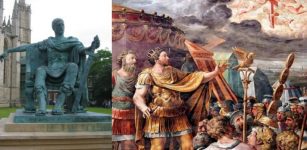 Constantine The Great – Did First Roman Christian Emperor Use Faith For His Own Agenda?
Featured Stories | Aug 8, 2018
Constantine The Great – Did First Roman Christian Emperor Use Faith For His Own Agenda?
Featured Stories | Aug 8, 2018 -
 ‘Tonina Chiapas’ Mayan Pyramid In Southern Mexico Is Among The Largest Yet Found
Civilizations | Oct 29, 2018
‘Tonina Chiapas’ Mayan Pyramid In Southern Mexico Is Among The Largest Yet Found
Civilizations | Oct 29, 2018 -
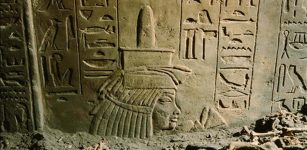 Tomb Of Maia, Tutankhamun’s Wet Nurse In Egypt’s Saqqara Opens To Public
Archaeology | Dec 22, 2015
Tomb Of Maia, Tutankhamun’s Wet Nurse In Egypt’s Saqqara Opens To Public
Archaeology | Dec 22, 2015 -
 Trees Are Deeply Rooted In Beliefs And Cultural Traditions Of Ancient People Around The World
Featured Stories | Feb 18, 2018
Trees Are Deeply Rooted In Beliefs And Cultural Traditions Of Ancient People Around The World
Featured Stories | Feb 18, 2018 -
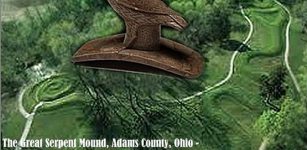 Great Serpent Mound Of Ohio: Most Famous Ancient Earthwork Of North America
Civilizations | Mar 17, 2014
Great Serpent Mound Of Ohio: Most Famous Ancient Earthwork Of North America
Civilizations | Mar 17, 2014 -
 Saptarishi – Seven Sages Who Guided Humanity During Four Great Ages
Featured Stories | Apr 2, 2019
Saptarishi – Seven Sages Who Guided Humanity During Four Great Ages
Featured Stories | Apr 2, 2019 -
 L’Anse Aux Meadows – Viking Site Confirms Norse Vinland Sagas Were Based On Real Events
Featured Stories | Jun 10, 2021
L’Anse Aux Meadows – Viking Site Confirms Norse Vinland Sagas Were Based On Real Events
Featured Stories | Jun 10, 2021 -
 Mythical Fiery Bird Phoenix In Mythologies Of Many Ancient Cultures
Featured Stories | Mar 23, 2017
Mythical Fiery Bird Phoenix In Mythologies Of Many Ancient Cultures
Featured Stories | Mar 23, 2017 -
 Beethoven’s Genome Offers Clues To Composer’s Health And Family History
DNA | Mar 27, 2023
Beethoven’s Genome Offers Clues To Composer’s Health And Family History
DNA | Mar 27, 2023 -
 Catastrophic Final Flooding Of Doggerland By The Storegga Tsunami – New Study Results
Archaeology | Dec 2, 2020
Catastrophic Final Flooding Of Doggerland By The Storegga Tsunami – New Study Results
Archaeology | Dec 2, 2020 -
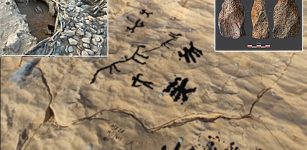 Unique Finds Discovered In Oman – Rub’al-Chali Desert Reveals Its Secrets
Archaeology | Apr 20, 2023
Unique Finds Discovered In Oman – Rub’al-Chali Desert Reveals Its Secrets
Archaeology | Apr 20, 2023 -
 Mysterious Engraved Bones Discovered On The Island Of Janitzio In Michoacán, Mexico
Archaeology | Jun 25, 2024
Mysterious Engraved Bones Discovered On The Island Of Janitzio In Michoacán, Mexico
Archaeology | Jun 25, 2024 -
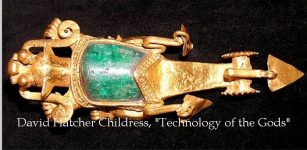 Prehistoric Heavy Machinery Of The Ancient Times Or A Piece Of Jewelry?
Ancient Technology | Sep 12, 2018
Prehistoric Heavy Machinery Of The Ancient Times Or A Piece Of Jewelry?
Ancient Technology | Sep 12, 2018 -
 Archaeologists Encounter A 1,500-Year-Old Mystery In Kent, UK
Archaeology | Mar 16, 2022
Archaeologists Encounter A 1,500-Year-Old Mystery In Kent, UK
Archaeology | Mar 16, 2022 -
 Tomb Of Nicolaus Copernicus: Is The Mystery Surrounding Astronomer’s Burial Place Really Solved?
Featured Stories | Apr 13, 2018
Tomb Of Nicolaus Copernicus: Is The Mystery Surrounding Astronomer’s Burial Place Really Solved?
Featured Stories | Apr 13, 2018 -
 On This Day In History: Anne Boleyn, The Second Wife Of Henry VIII – Beheaded For Adultery, Treason And Incest – On May 19, 1536
News | May 19, 2016
On This Day In History: Anne Boleyn, The Second Wife Of Henry VIII – Beheaded For Adultery, Treason And Incest – On May 19, 1536
News | May 19, 2016 -
 Giant 7,000-Year-Old Astronomical Calendar Discovered In Poland?
Archaeology | Dec 22, 2017
Giant 7,000-Year-Old Astronomical Calendar Discovered In Poland?
Archaeology | Dec 22, 2017 -
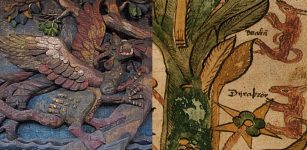 Magical And Malicious Creatures That Prey Upon Yggdrasil In Norse Beliefs
Featured Stories | Dec 6, 2019
Magical And Malicious Creatures That Prey Upon Yggdrasil In Norse Beliefs
Featured Stories | Dec 6, 2019 -
 Controversial Story And Secret Knowledge Of Li Ching-Yuen Who Lived For 256 Years
Featured Stories | Sep 19, 2015
Controversial Story And Secret Knowledge Of Li Ching-Yuen Who Lived For 256 Years
Featured Stories | Sep 19, 2015 -
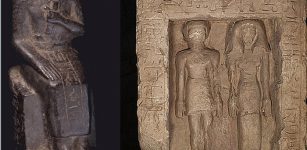 Excavation At Tell Edfu Reveals Early New Kingdom Complex
Archaeology | Jan 10, 2019
Excavation At Tell Edfu Reveals Early New Kingdom Complex
Archaeology | Jan 10, 2019




